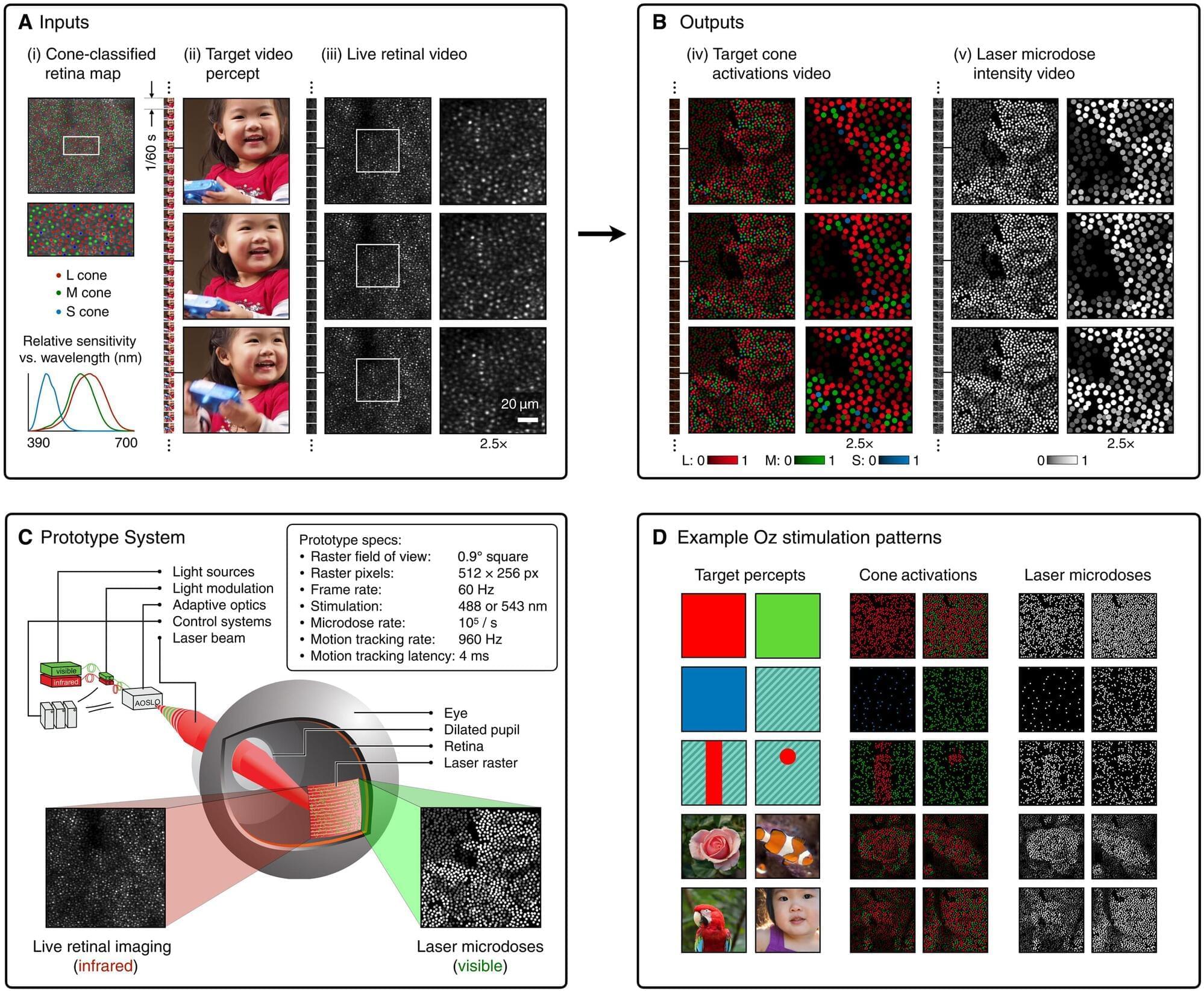A team of engineers, computer scientists and ophthalmologists at the University of California, Berkeley, working with a pair of colleagues at the University of Washington, has developed a technique for stimulating the retina that allows people to see a color not normally seen by humans.
In their study published in the journal Science Advances, the group identified certain photoreceptors in volunteers and then stimulated them to allow those volunteers to see the unique color, which the team has named “olo.”
The human eye has two types of photoreceptors, rods and cones. Rods are used mostly to see in dark conditions. Cones are further divided into long, medium and short cones (L, M and S) depending on which wavelength of light they process most efficiently. Prior research has shown that there is some overlap in light processing between the cones, and the researchers wondered what would happen if light were only processed by one type, such as M.
